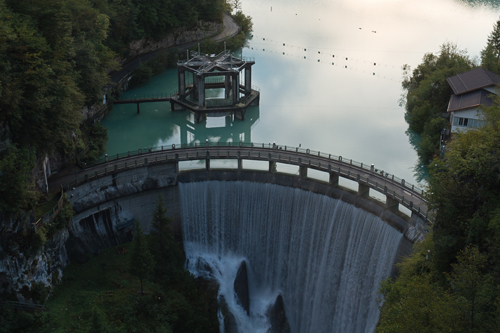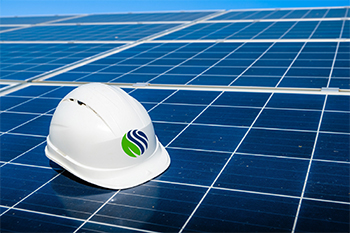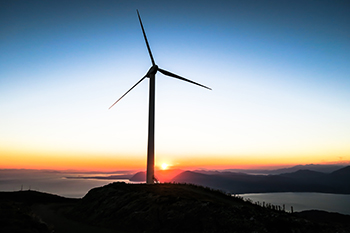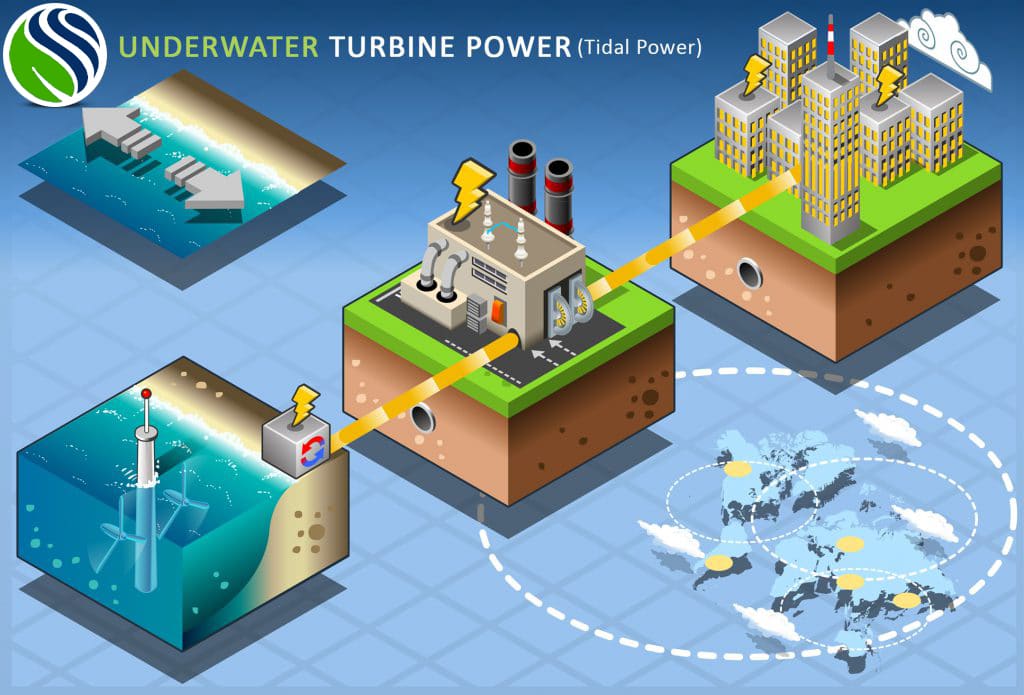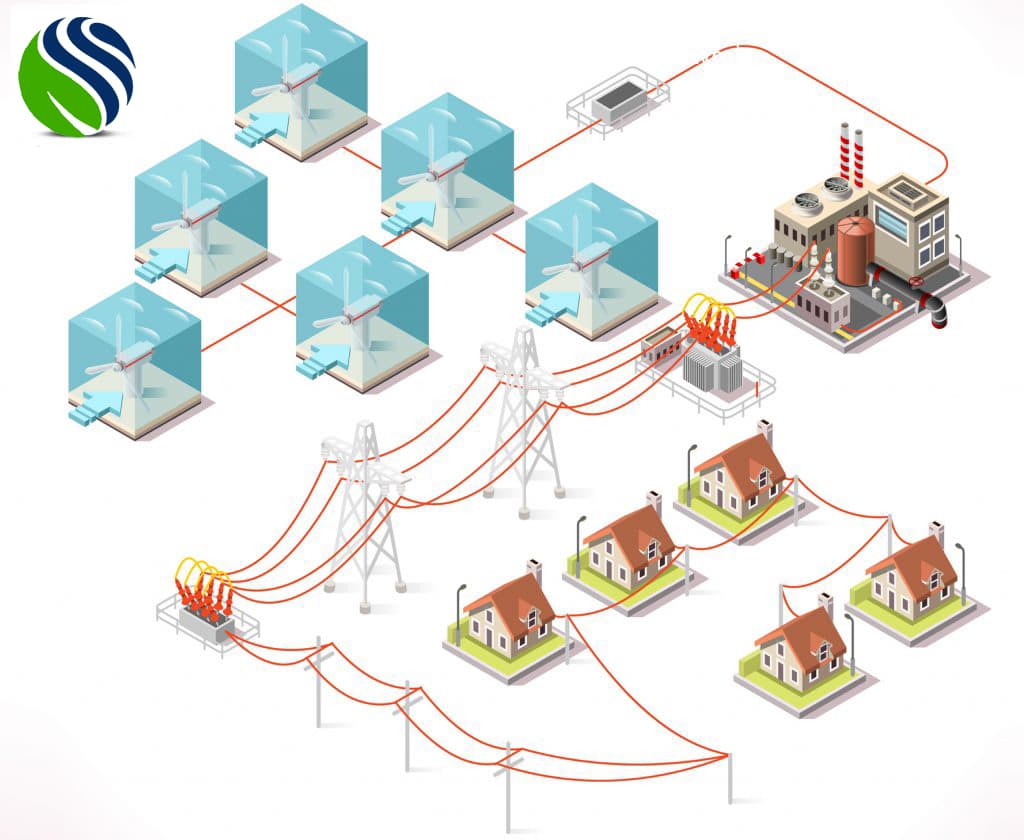
- Home
- /
- Hydropower Technologies
Tidal Technology
What is Tidal Power?
Tidal Power(Turbine Power) exploits energy drawn from the movement of ocean tides to produce electricity. There are two main branches of technology that tap the tides for energy.
The first and best known are Tidal Range Technologies which harness power through dam-like structures that trap rising waters on one side and then release it back to the other through turbines that spin to generate electricity.
The second technology is newer and just beginning to be tested out on a commercial scale around the world, so-called Tidal Stream Technologies.
They harness fast-flowing currents to spin turbines. Tidal stream turbines come in many shapes and sizes but the most common designs are basically underwater wind turbines.
Until the last decade, large-scale tidal range systems dominated the tidal power scene. Yet severe environmental and economic drawbacks to this technology quickly became evident and this has stymied its development and prevented it from taking off.
Though it has been around since the 1960s only a handful of tidal barrages have been built around the world.
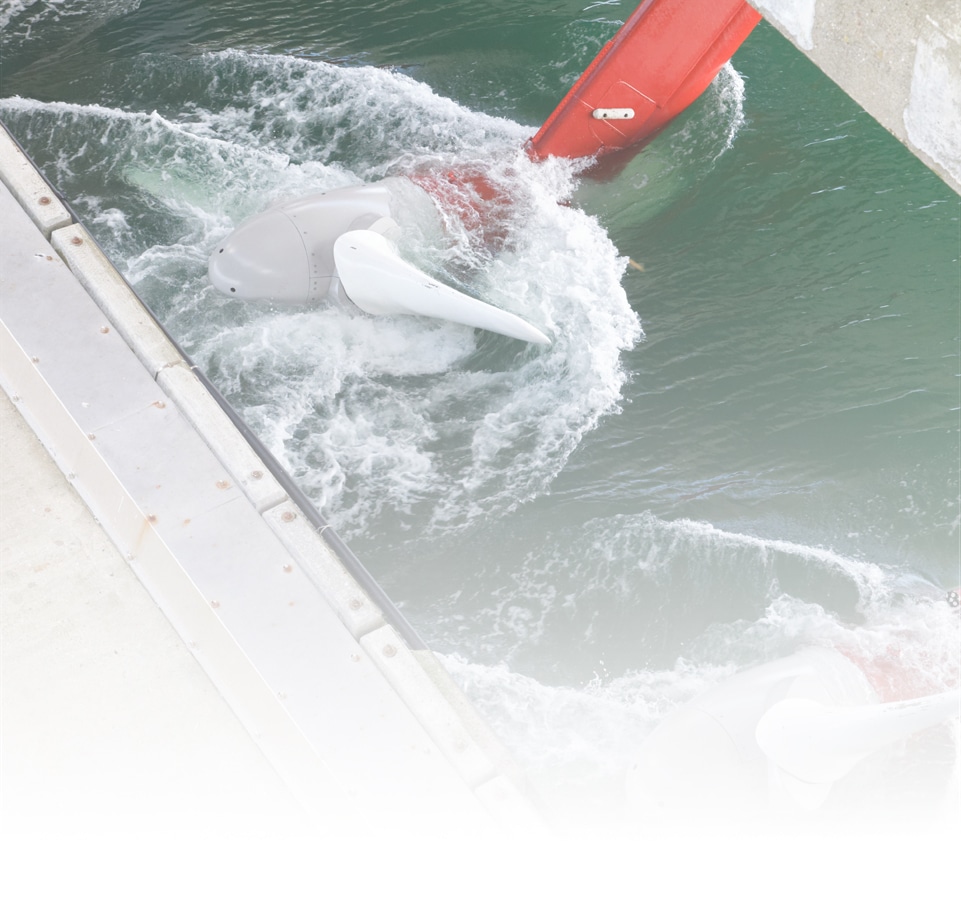
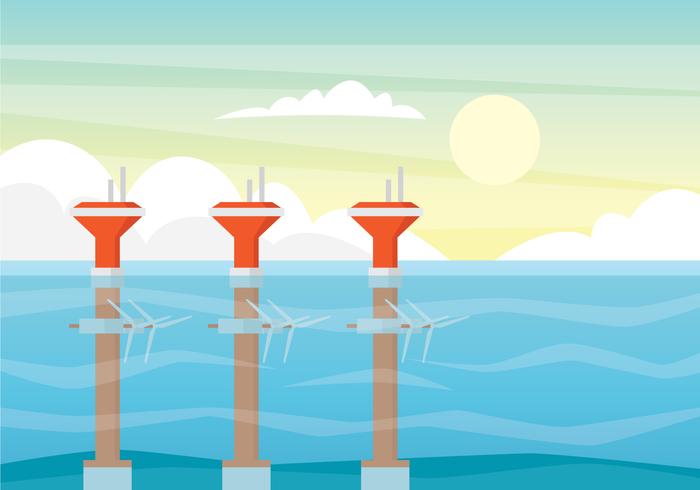
Tidal Energy Is Considered Renewable
Tidal energy is considered renewable because the tides move on a predictable, daily schedule, depending only on the orbits of the Earth, Moon, and Sun, and are essentially inexhaustible.
Though tidal energy is carbon-free, tidal range technologies have not proven to be environmentally benign. Concerns over the health of shoreline and aquatic ecosystems mar this otherwise clean source of energy.
The focus of research and development has shifted from tidal range systems to tidal stream technologies. Though more environmental studies have to be conducted on these new technologies, at this time they appear very promising.
Power from tidal stream turbines is still very expensive, but the technology is still in its infancy and the industry today is often likened to the wind power industry 20 years ago.
At that time wind power was hugely expensive but continued investment succeeded in bringing the price of wind farms down to where they are today, economically competitive with practically every power source.
How Tidal Power Works
- here are two main tidal power technologies called tidal range and tidal stream.
- Tidal range facilities act like dams that trap the tides and then release the water to generate electricity.
- Tidal stream technologies can be thought of as similar to underwater wind turbines
Tides are created by the gravitational pull of the sun, moon and the rotation of the earth and tidal power generators work by harnessing their natural ebb and flow.
Tidal energy can be harnessed both in the sea and in tidal rivers and estuaries. The ebb and flow of tides can occur once or twice a day depending on location.
Due to the upward gravitational rotation of the moon, the water level rises gradually until it reaches its highest point and then gradually falls back to its lowest point.
One of the main advantages of tidal power over solar or wind power is that the tides are entirely predictable and power can be scheduled years in advance.
The tide does not occur at the same time every day but rather fluctuates over a period of roughly two weeks.
There are two main tidal power generation technologies.
The first is tidal range technologies that rely on the rise and fall of sea level to generate power. The second, tidal stream technologies, harness the currents created by tides.

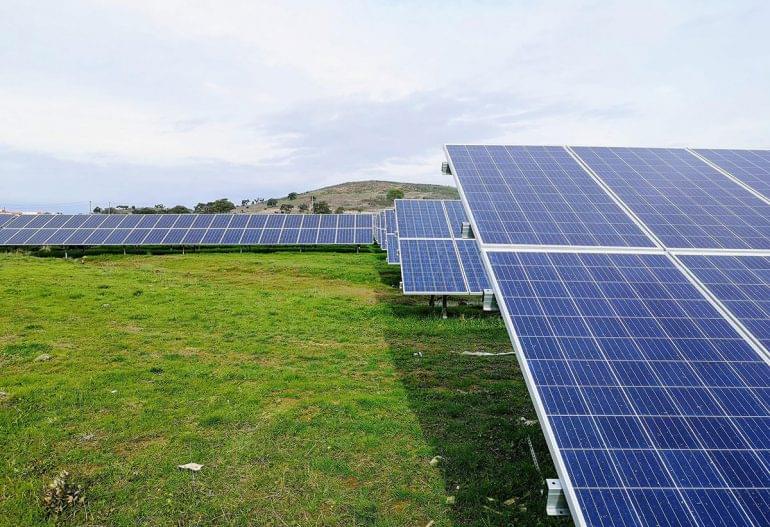
UN Organizations Launch Clean Energy Plan
Against the backdrop of a global energy crisis and worsening climate emergency, today the UN …

iHAT Africa Public Announcement
iHAT AFRICA intends to develop and integration project for poultry production and renewable energy generation in the town ofZalala.

Geothermal Energy Production & Utilisation
Geothermal energy can be found all over the world, how feasible its utilisation is…

‘First-of-its-kind’ study to test geothermal energy
Geothermal is a type of renewable energy taken from heat that comes from the earth’s subsurface, ..
iHAT collects and shares reliable information from various sites including , IREANA International Renewable Energy Agency →









